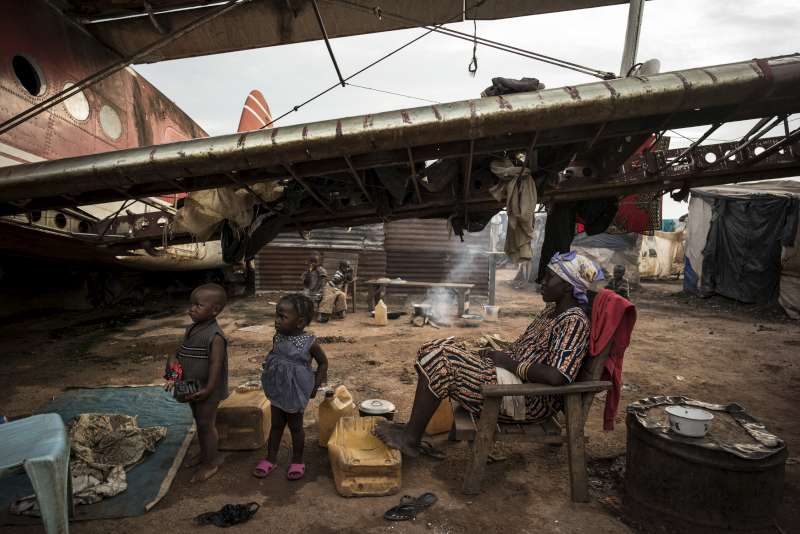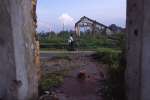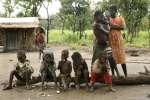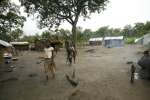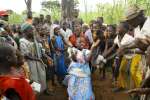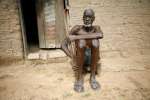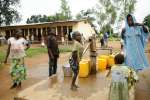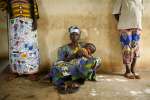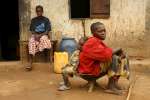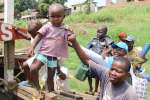- Text size
 |
|  |
|  |
| 
- Français
UNHCR urges CAR combatants to use Pope's visit to seek peace
News Stories, 27 November 2015
GENEVA, Nov 27 (UNHCR) – The UN Refugee Agency has urged Central African Republic's warring groups to take the opportunity of Pope Francis's scheduled visit to Bangui this weekend to rebuild the national reconciliation process.
Pope Francis is due to arrive in CAR on Sunday during his first visit to Africa as pontiff. He plans to visit a site for internally displaced people, meet with evangelical Christians and visit a mosque in Bangui, the nation's capital.
The call by UNHCR comes after a wave of increasingly violent attacks that has triggered an 18 per cent increase in the number of people displaced within the country since September.
"Although the situation in Bangui is currently calm but tense, we are concerned at the outbursts of violence in the country, which set back fragile efforts to restore a lasting peace and put planned elections in late December at risk," UNHCR spokesperson Leo Dobbs told a media briefing in Geneva.
The intra-communal fighting, starting in September and flaring up again in late October and November, left scores of people dead, hundreds of homes destroyed and more than 70,000 people displaced within CAR, reversing a pattern of returns seen in much of the country in the first nine months. Hundreds of people have also fled to Democratic Republic of the Congo since September.
The fighting has already caused one postponement in the presidential and legislative elections, from October 18 to December 27, as well as stoking the sectarian divide and inter-communal tensions.
At least 13 people died, including a UN peace-keeper, and hundreds were injured in November in the latest armed clashes in Bangui, Bambari and Batangafo, which included attacks on sites for internally displaced people. Some 800 IDP shelters and 120 houses were destroyed in Bangui neighbourhoods.
The number of internally displaced rose 18 per cent from 378,400 in early September to 447,500 in November.
"Those fleeing their homes have mostly hidden in the bush, fled to other sites or moved to the shelter of UN peace-keeping bases or compounds run by international humanitarian organizations," Dobbs said.
Central African refugees also continue to cross the Oubangui River into Democratic Republic of the Congo. During the first three weeks of November, UNHCR registered 1,236 refugees in Equateur province, most of them new arrivals and many were families headed by women.
Refugees told UNHCR they had fled reprisal attacks between armed groups, which also targeted the civilian population. Some reported that their houses had been destroyed, their property looted and family members killed.
Amid sporadic but disquieting reports this month of border incursions from CAR, some refugees have asked to move away from the border. A lack of funding is hampering UNHCR efforts to provide basic aid and relocate thousands of CAR refugees to safer areas.
The recent waves of displacement have created new needs for protection, emergency shelter, health care, psychosocial support as well as water and sanitation. In many cases, help has been difficult to provide because insecurity has made it difficult to get access to some areas – some displaced people remain without assistance for days.
At the same time, humanitarian organizations have been increasingly targeted since September. At least 10 organizations have had their offices and warehouses looted and staff attacked. This is a worrying development, and UNHCR reiterates earlier calls for guaranteed humanitarian access and for protection of aid workers as they try to reach the most vulnerable.
Most agencies remain operational, including UNHCR, which with its partners has provided aid to tens of thousands of newly displaced people in Bangui, Bambari and elsewhere, including tents and emergency shelters, tarpaulins, mats, blankets and kitchen kits. These distributions were however suspended following the outbreak of violence on October 26 in Bangui.
In Bangui, an estimated 24,000 people returned between January and early September. In Bangui's Mpoko airport site, the number of IDPs fell from 20,000 in December 2014 to 11,000 last August. Today, Mpoko hosts some 19,000 people.
"The recent instability is all the more disheartening because it came after relative peace appeared to be returning this year to CAR, especially in urban areas. Before the latest violence, the trends indicated that displaced people were going back to their homes," Dobbs said.
Today, protection concerns include arbitrary arrests and illegal detention, torture, extortion, armed robbery, beatings, rape and other sexual violence, looting, arbitrary attacks on civilians, burning of villages, kidnapping, forced recruitment by armed group of children and others, restriction of movements.
